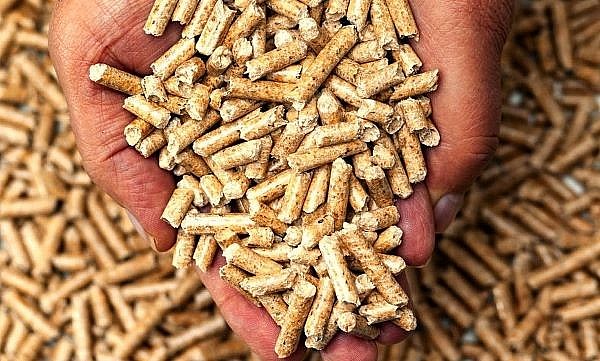 Economy
Economy


|
| Việt Nam has become the second largest exporter of wood pellets in the world. Photo courtesy of Vietnam Wood Pellets Branch |
by Tố Như
Wood pellets are likely to become one of Việt Nam’s key export agro-forestry products with an estimated export turnover of US$1 billion in 2023, according to Đỗ Xuân Lập, Chairman of Vietnam Timber and Forest Product Association.
He was speaking at the congress of establishing Vietnam Wood Pellets Branch in Hạ Long City in the northern province of Quảng Ninh Province on October 28.

|
| The congress of establishing Vietnam Wood Pellets Branch was held in Quảng Ninh Province on October 28. Photo danviet.vn |
Lập said that pellet production was thriving, bringing significant value to the forestry value chain. This year, wood pellets ranked 4th in terms of export value in eight export items and forest products, behind interior and exterior furniture, wood materials and wood chips.
The first ten months of this year have recorded a sharp rise in output and export prices of wood pellets. In 2021, the amount of wood pellets exported from Việt Nam reached 3.5 million tonnes with a turnover of over $413 million. However, that amount reached nearly 3.5 million tons in the first ten months of this year, worth around $550 million, increasing by 35 per cent in volume and 81 per cent in value over the same period of last year.
“Việt Nam has become the second largest exporter of wood pellets in the world. Japan and South Korea are the two largest customers of Việt Nam’s wood pellet production,” Lập said, adding that more than 90 per cent of Việt Nam’s wood pellets have been purchased by the two Eastern Asian countries.
According to wood industry enterprises, the demand for importing wood pellets as fuel for this winter is increasing rapidly in EU countries, Japan, and South Korea.
Speaking at the congress, Bùi Chính Nghĩa, Deputy Director General of the General Department of Forestry under the Ministry of Agriculture and Rural Development, said that the production and export of wood pellets has constantly grown in both scale and quantity.
“Việt Nam now has about 80 enterprises engaged in the production and export of wood pellets," he said.
"The export value of wood pellets has been continuously increasing from $145 million in 2017 to over $500 million this year."
If the growth is maintained at the current rate, export turnover for the whole year of 2022 may reach around $700 million.
Nghĩa emphasised the importance of establishing the Vietnam Wood Pellet Branch to unite and unify the enterprises producing and exporting wood pellets, solve arising obstacles and ensure the sustainable development and effectiveness of the industry.
He added: "I hope that after the Congress, there will be a branch that has a voice and plays an important role in the development of the association and the wood industry."
Also at the congress, Vũ Duy Vân, Deputy Director of Quảng Ninh Provincial Department of Agriculture and Rural Development, said that the province has many good conditions to become a centre for transhipment of imported and exported goods to the international market, including items processed from wood and forest products.
According to the deputy director, the export turnover of wood of Quảng Ninh has grown steadily over the years. As of October 2022, the province's export value of wood was estimated at $210 million, up 9 per cent over the same period last year. The main export markets are Japan, China, and South Korea.
He said: “I expect that the establishment of the Vietnam Wood Pellet Association will act as a premise for investment and development of modern and intensive forest product processing factories nationwide and in Quảng Ninh Province in particular. The province is always willing to create the best conditions for potential investors.”
Wood pellets, commonly made of raw materials such as wood chips, sawdust, shavings, bark, crop straw, and other biomass materials, are becoming a billion-dollar industry with no export tax, according to insiders. Such pellets are now a promising choice as a form of fuel.
Wood pellets are considered a form of carbon neutral renewable energy. The pellets are also used on a large scale in the industry to enhance the thermal value of waste and reduce pollutant emissions.
Europeans use wood pellets in small fireplaces and hot water supply systems to replace electric or gas fireplaces. VNS




